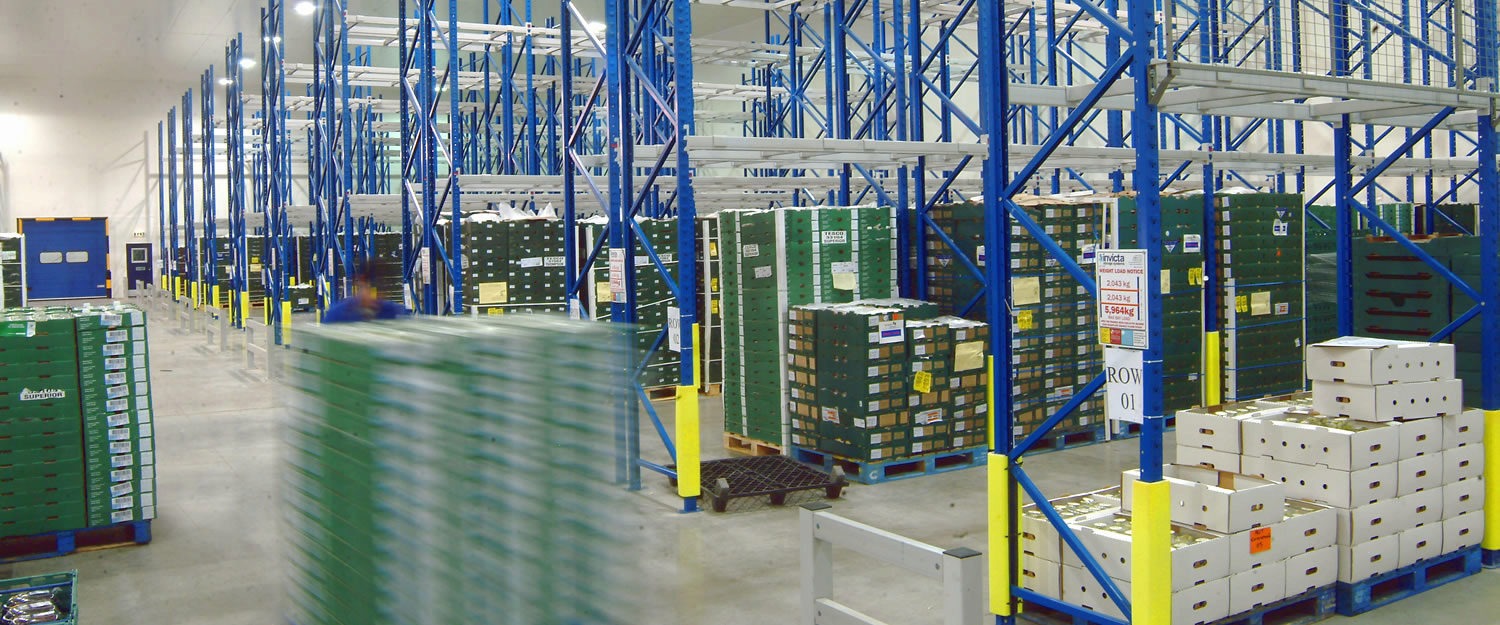For your information
You are being redirected to one of our divisional subsites which contains more detailed information on the required division. To navigate back to the main Invicta Group site, please click the link found in the footer at the bottom of the page.
How to store irregularly sized items more efficiently
16th January 2023
Quick Quote
Contact Mick Coyne
To get a quotation or arrange a free site survey - Call Mick Coyne on
-
 UK
UK
Current location:
Quick Quote
Contact Mick Coyne
-
 UK
UK
Current location:
Warehouse storage is often talked about as if it’s a ‘one size fits all’ solution, with the only difference being the size of pallets and aisles. Yet the configuration of your racking can vary massively depending on what you are storing, how much you’re storing, and how transient it is. In many cases, it may seem more economical or sensible to just store it on the ground, and not use racking at all.
In reality, racking can be configured to store almost anything, and to do so with greater efficiency than placing pallets on the ground. From small and oddly-shaped items to extremely large and heavy ones, racking is more customisable than you might think – and doing so can have substantial benefits in terms of efficiency and storage capacity.
Make effective use of racking
The first port of call is to stop storing pallets on the warehouse floor unless absolutely necessary, and instead look at ways to utilise warehouse pallet racking. The immediate assumption is often that awkwardly sized objects are impossible to rack, so floor storage occurs by default. In reality, racking can be configured to store all sizes and shapes of objects, and to condense them in a way that makes best use of the available space.
Designing a racking system – or reconfiguring an existing one – to suit particular types of items can increase the size and accessibility of the picking face, allowing for faster throughput. Being able to store the items in a purpose-built area is also generally more efficient, as it allows you to occupy both the full footprint and headroom of the warehouse with a multi-tier system – something that floor storage simply doesn’t afford.
Don’t assume that something can’t be racked
Perhaps it’s the videos of racks toppling like dominoes, but for some reason, many people have a perception that racking is only for certain kinds of goods. This may be a natural assumption in the case of strangely shaped items, which may not obviously fit on your usual pallets or shelves. Racking can be both extremely strong and extremely adaptable, however, and there’s very little that doesn’t benefit from being better organised and presented.
Racking can be customised to support many different pallet sizes, as well as other storage containers and devices. Even extremely heavy and bulky items (e.g. industrial or machine parts) can often be more efficiently stored in racking. Simple structural steel racks, lifts and mezzanines can support weights of multiple tonnes if designed to the right specifications, allowing heavy and bulky items to be stored at height as well as floor level.
Integrate stillages with racking
One of the alternate means of storage that can be easily housed within racking is a stillage. Most racks can be designed or modified to hold stillages, which are deposited in a similar manner to single-deep drive-in racks. The warehouse vehicle simply deposits the stillage in the bay, and warehouse operatives pick items from the stillage until it is depleted or replaced.
Storing stillages within a racking system allows for easier picking and more efficient storage than placing the stillages on the floor, or even compared to placing them on beams in a more general pallet racking setup. The items are oriented in the most efficient way possible within the stillage, and the stillage occupies the entire space of the bay – maximising the use of the space in a multi-tier system.
Raise the first beam level first!
Sometimes the biggest issue with awkwardly shaped items isn’t fitting them into your racking, but doing so in a way that makes them easy to pick. The most efficient way to store things isn’t always the best way, and you may find that the awkwardness of removing items slows down operatives, and could even pose a safety risk.
Raising the first beam level of your pallet racking has all sorts of safety considerations, as it changes the load distribution of the racking. However, it can also place items at a height that’s more amenable to picking and storage, making the process more efficient and less demanding of operatives.
Use technology creatively
All sorts of technologies can be implemented to customise your racking for specific purposes, and better store unusual items. Motors or simple gravity flow storage can be used to push items into place for convenient picking, while air pressure can create a lip on thin, lightweight items such as paper sheets to allow them to be picked apart easily.
An automated storage and retrieval system (AS/RS) meanwhile can allow for small goods to be stored extremely densely, with an autonomous vehicle scaling large racking systems and fetching pallets or goods for you. Innovative new warehouse vehicles can also enable access to various racking configurations, with the ability to pivot and move heavy or peculiarly shaped pallets at varying elevations.
—
There is very little that can’t be stored on pallet racking, but there is a difference between being able to store it and storing it effectively. If you are simply ‘making do’ with the racking you have, it’s likely that the density of your storage is being reduced. If you aren’t careful, the placement of awkward objects into non-adapted racking could even pose a safety or structural issue.
By configuring your racking for the items you intend to store, you can ensure the integrity of the racking isn’t compromised, and fit more pallets or objects into the same space. By doing so, you’ll start a cascade of efficiency savings throughout the warehouse – reducing the time spent picking and moving pallets, and freeing up space for other applications.
Accreditations & Affiliations







Start your project
Tell us about your project. Please complete this form. One of our sales team will come back to you with more details. If you prefer, you can drop us an email.




Share/Like this page